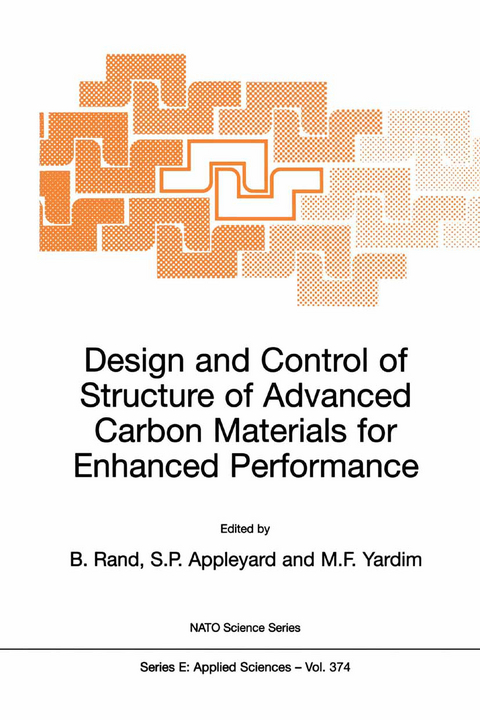
Design and Control of Structure of Advanced Carbon Materials for Enhanced Performance
Springer-Verlag New York Inc.
978-1-4020-0003-4 (ISBN)
Carbon is unique in the range of structures and properties that are displayed by its material forms. The bonds in diamond, within the plane ofgraphite and in the fullerene molecules, C , are the strongest covalent bonds possible. This strong covalent bonding 60 leads to some exceptional intrinsic properties, examples ofwhich are: the greatest Young's modulus (in diamond, within the graphite plane and in single walled nanotubes) the highest room temperature thermal conductivity (in diamond and within the graphite plane) high hole mobility in doped diamond exceptional thermal stability ofthe structure in graphite It is because of the extreme thermal stability that such a wide range of materials is available. Atomic mobilities are low at all but the highest temperatures. Sintering, melting and casting ofcarbon are not feasible processing operations and carbon/graphite components are exclusively produced from the pyrolytic decomposition of organic precursors. The vast majority of engineering carbons have Sp2 type bonding and are related in some way to the structure of graphite. In the c-direction the bonding in graphite is of van der Waals character with the result that graphite is highly anisotropic in its properties and is probably unique in showing both the highest and lowest bond strengths in different directions in the same crystal.
One — Structure and Properties.- Polymorphism in Carbons and Parent Materials.- Theory and Modelling of Carbon.- Characterisation of Carbon Structure.- Thermal and Electrical Properties of Carbons Relationship to Structure.- Surface Properties of Carbons for Advanced Carbon-Based Composites.- Two — Processing.- Pitch Precursor-Origin and Chemical Constitution.- The Thermal Processing and Rheological Behaviour of Pitch.- Mesophase Precursors for Advanced Carbon Fibers Pitches, Stabilization and Carbonization.- Carbon Fiber Processing and Structure/Property Relations.- Carbon-Carbon Composites Relating Processing to Structure and Properties.- Preparation and Structure of Carbon Fibres and Carbon Nanotubes from the Vapour Phase From Fibres To Nanotubes.- Manufacture of Bulk Carbon and Graphite Materials.- Three — Properties, Applications and New Directions.- Mechanical Properties of Carbon-Carbon Composites.- High Strength, Sintered Carbons and Graphites.- Anode Performance of the Li-Ion Secondary Battery.- Carbon Materials for Energy Production and Storage.- Porous Carbons for Gas Storage and Separation Characterisation and Performance.- Carbon-Ceramic Alloys.- “Carbon Alloys”.
| Reihe/Serie | NATO Science Series E ; 374 |
|---|---|
| Zusatzinfo | XXIII, 347 p. |
| Verlagsort | New York, NY |
| Sprache | englisch |
| Maße | 160 x 240 mm |
| Themenwelt | Naturwissenschaften ► Chemie ► Anorganische Chemie |
| Naturwissenschaften ► Chemie ► Technische Chemie | |
| Technik ► Maschinenbau | |
| ISBN-10 | 1-4020-0003-0 / 1402000030 |
| ISBN-13 | 978-1-4020-0003-4 / 9781402000034 |
| Zustand | Neuware |
| Haben Sie eine Frage zum Produkt? |
aus dem Bereich


